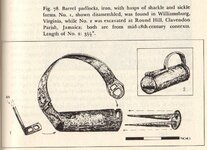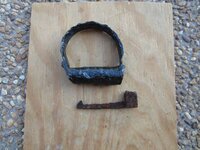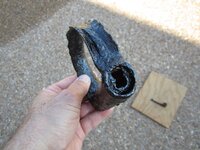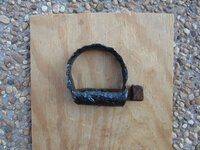Bill D. (VA)
Silver Member
Dan and I recovered this interesting relic along with a number of other iron artifacts when digging a 1700s pit a couple weekends ago. Even though it was first thought to be a shackle, it was confirmed in Hume's book that it was indeed an 18th century barrel padlock (see item #1 in the pic), and is one of 4 padlocks found in this pit so far. It was extremely encrusted when initially recovered, and it spent almost 2 weeks in the electrolysis tank at high amperage before I had to finally take it out for fear of removing too much of the base metal in spots. We also found what we think might be the key that fits this lock which would be pretty cool. It's shown in the pics below both adjacent to and inserted into the lock. The lock releases on the right and the hinge is on the left. We also have a number of other interesting iron artifacts that came from this pit that still need to be cleaned up. To help with that I just finished putting together a new setup that will allow for cleaning of multiple items at one time. But I have a feeling it will take much longer than usual due to the current being split multiple ways. Will be an interesting experiment anyway.
Attachments
Upvote
11











